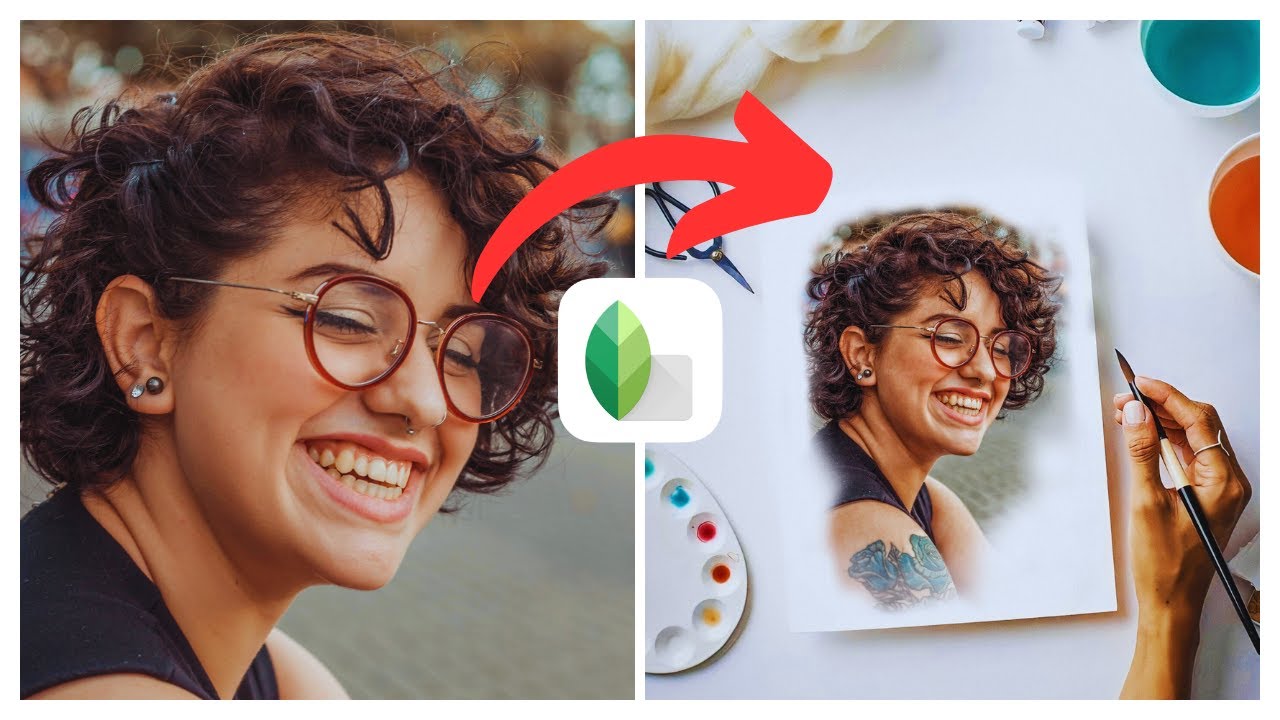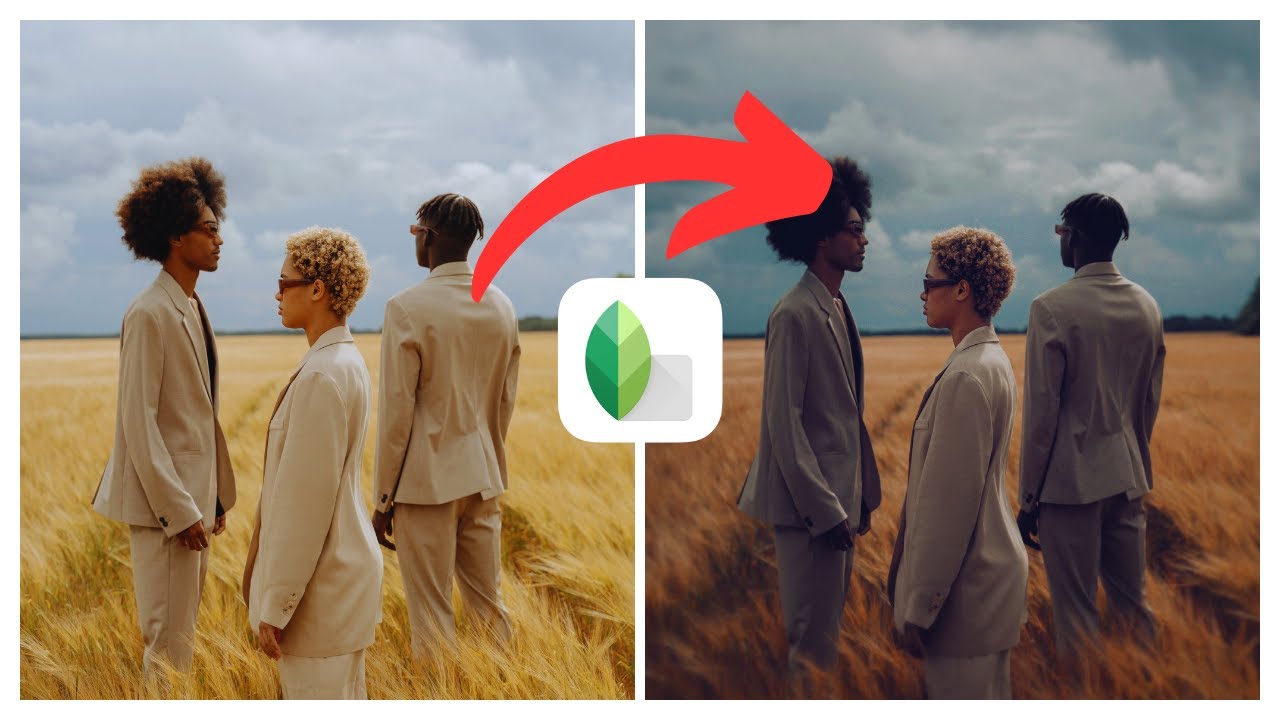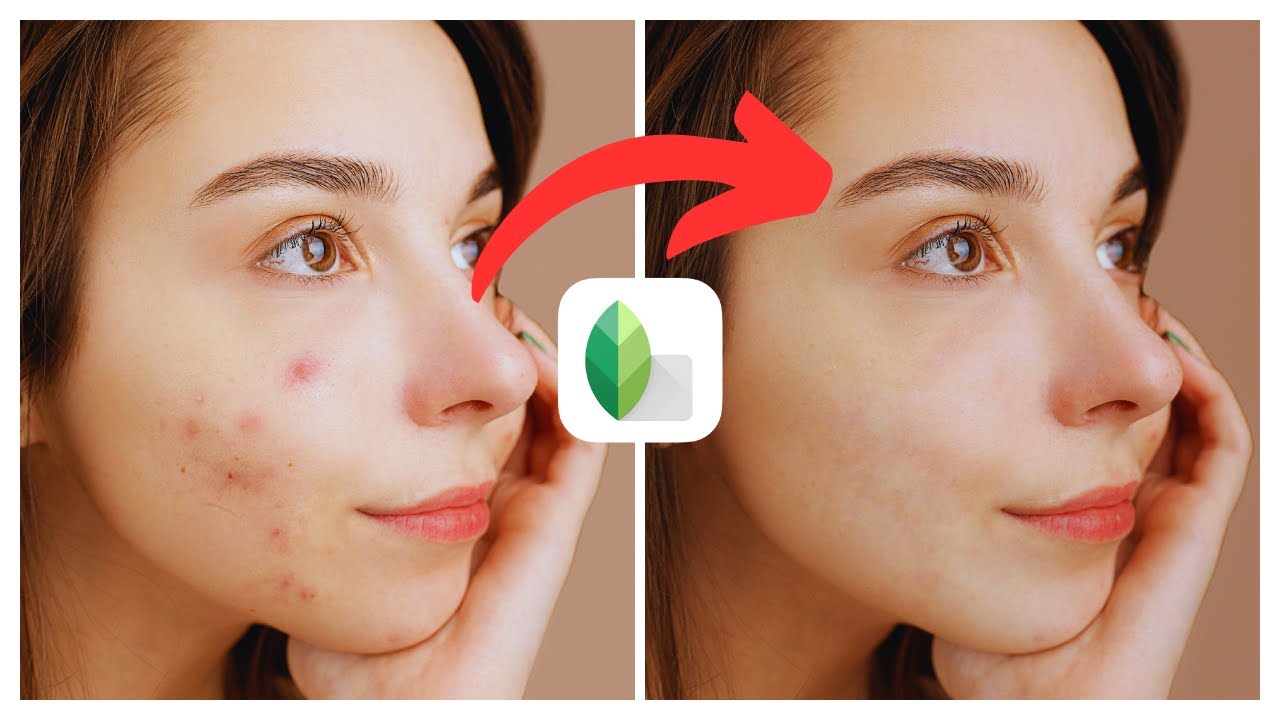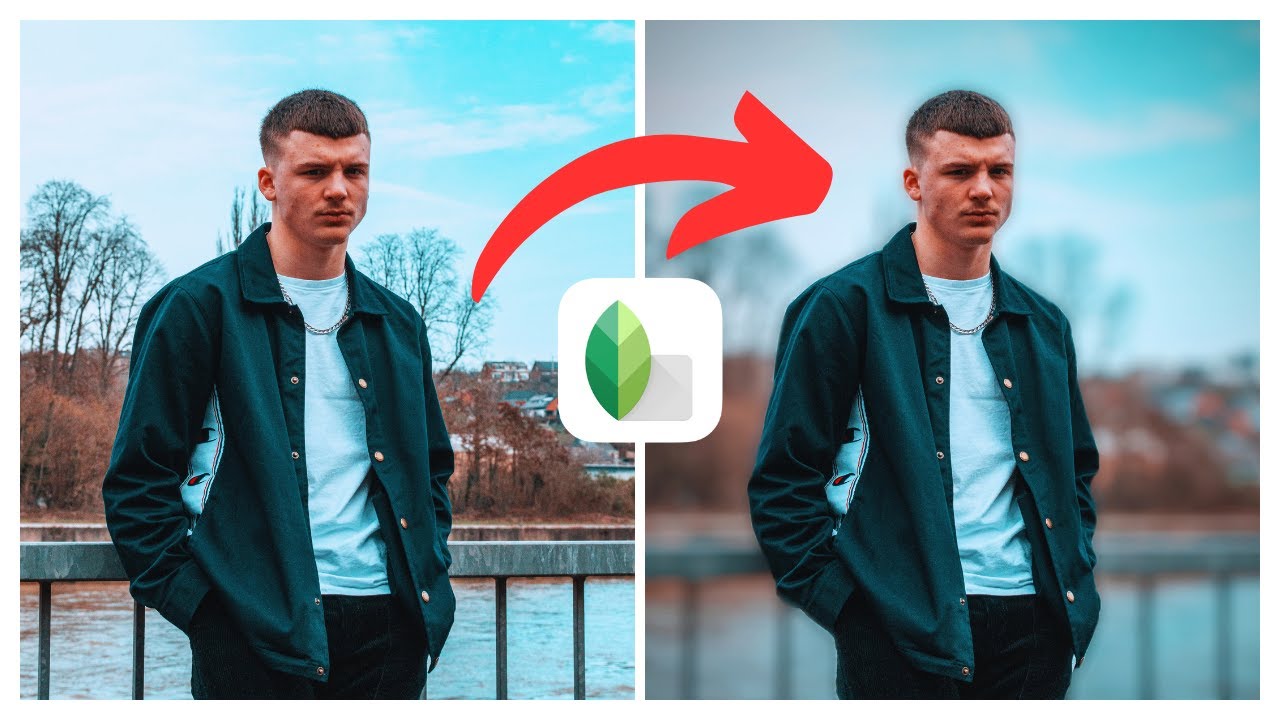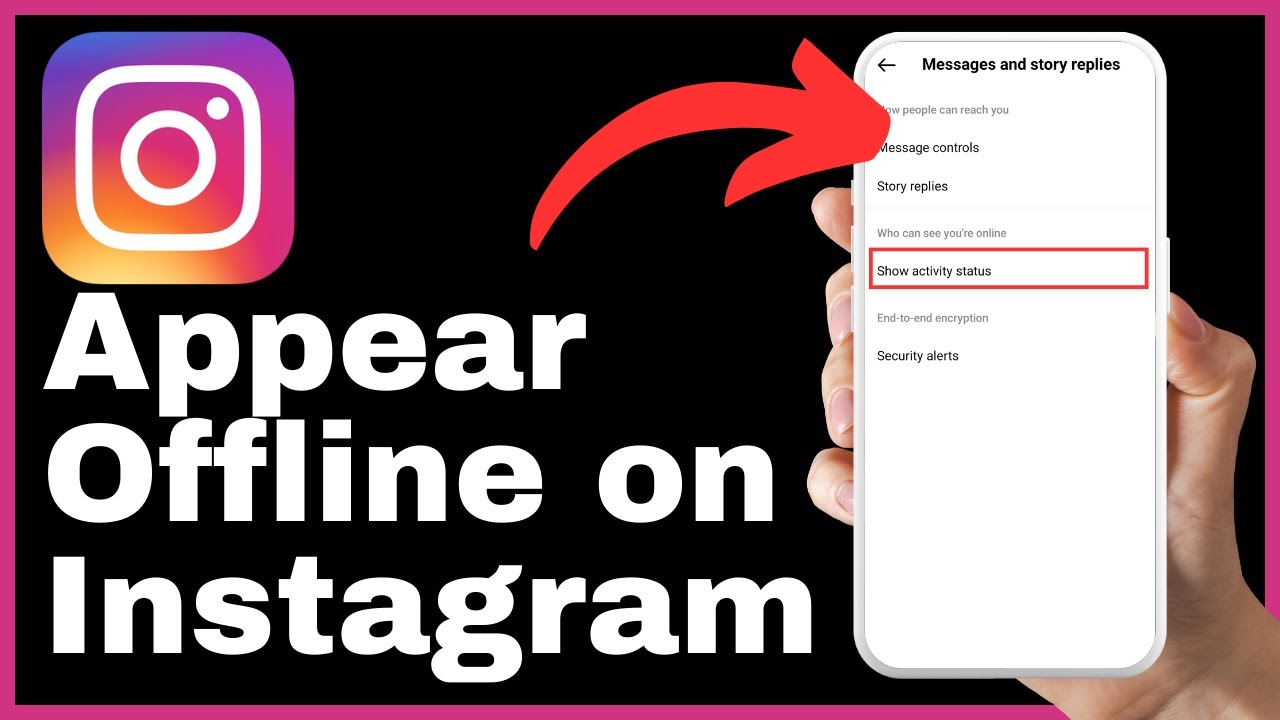In this article titled “How to Clone Yourself in Snapseed | (iOS & Android)”, you will learn the step-by-step process of cloning yourself within a photo using the popular photo editing app, Snapseed. This tutorial is designed for both iOS and Android users, making it accessible to a wide range of smartphone users. By following the instructions provided in this article, you will be able to add a fun and creative element to your images, allowing you to experiment with unique and eye-catching effects. Discover the art of cloning and take your photography skills to the next level with the help of this comprehensive guide.
Snapseed, developed by Google, is a powerful and user-friendly photo editing app that offers a wide range of editing tools and filters. Whether you are a beginner or a more experienced photographer, Snapseed provides a platform for enhancing and transforming your photos with ease. From simple adjustments to advanced editing techniques, this app enables you to unleash your creativity and explore various artistic possibilities. Don’t miss out on the opportunity to enhance and personalize your photos by learning how to clone yourself in Snapseed, and make sure to stay tuned for other valuable tutorials and tips from Media Magnet Guide.
Understanding Snapseed
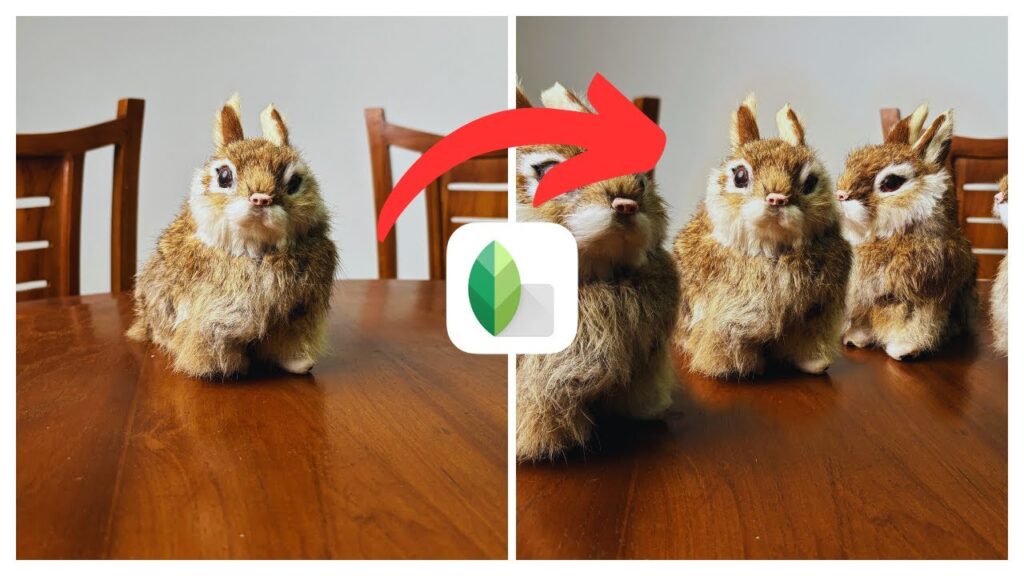
What is Snapseed
Snapseed is a powerful and user-friendly photo editing app developed by Google. It offers a wide range of editing tools and filters that allow users to enhance and transform their photos with ease. From simple adjustments to advanced editing techniques, Snapseed provides creative freedom for anyone looking to level up their photography game.
Why Snapseed is used so widely
Snapseed has gained widespread popularity due to its accessibility and versatility. Whether you’re a professional photographer or just someone looking to enhance your social media posts, Snapseed offers a wide array of features that cater to different editing needs. Its user-friendly interface, powerful tools, and impressive results make it a go-to choice for photo editing on both iOS and Android platforms.
Overview of Snapseed’s editing tools
Snapseed offers a comprehensive set of editing tools and filters that allow you to fine-tune your photos to perfection. Some of the key tools include:
- Tune Image: Adjusts brightness, contrast, saturation, and other essential parameters to enhance the overall look of your photos.
- Details: Enhances fine details in your photos, making them sharper and more defined.
- Curves: Allows you to fine-tune the brightness and contrast of specific tonal ranges in your photos.
- Selective: Enables you to selectively adjust brightness, contrast, and saturation in specific parts of your photo.
- Vintage: Applies nostalgic vintage filters to give your photos a retro look.
- Grunge: Adds gritty and edgy effects to your photos for a more artistic touch.
- Double Exposure: Combines two different photos to create a unique and blended image.
Getting Started with Snapseed
Installation process for iOS
To install Snapseed on your iOS device, follow these steps:
- Open the App Store on your iOS device.
- Search for “Snapseed” using the search bar at the bottom of the screen.
- Tap on the Snapseed app from the search results.
- Tap on the “Get” button next to the app icon.
- Enter your Apple ID password or use Touch ID/Face ID if prompted.
- Wait for the app to download and install on your device.
Installation process for Android
To install Snapseed on your Android device, follow these steps:
- Open the Google Play Store on your Android device.
- Tap on the search bar at the top of the screen.
- Type “Snapseed” in the search bar and tap on the magnifying glass icon.
- Tap on the Snapseed app from the search results.
- Tap on the “Install” button.
- Wait for the app to download and install on your device.
Initial set up and tour of Snapseed interface
Once you have installed Snapseed on your device, follow these steps to set it up and familiarize yourself with the interface:
- Open the Snapseed app.
- Grant any necessary permissions, such as accessing your photos.
- You will be greeted with the main screen, which displays your photo library.
- Tap the plus icon at the bottom of the screen to open a photo from your library or take a new photo.
- Once you have selected a photo, you will be taken to the editing screen.
- The editing screen consists of various tools and filters at the bottom, along with a toolbar on the right side for additional adjustments.
- Swipe left or right on the screen to access different editing tools.
- Tapping on a tool or filter will open its settings, allowing you to make adjustments.
- Use the toolbar on the right to fine-tune your edits further.
- Once you are satisfied with the changes, tap the checkmark icon at the bottom right to save your edited photo.
Basic Techniques in Snapseed
Basics of Photo Adjustments
Snapseed offers a range of basic photo adjustments that allow you to enhance the overall look of your images. Some essential adjustments you can make include:
- Brightness: Adjust the overall brightness of the photo.
- Contrast: Increase or decrease the difference between light and dark areas.
- Saturation: Boost or reduce the intensity of colors.
- Shadows: Brighten or darken the shadow areas in your photo.
- Highlights: Adjust the brightness of the brightest areas in your photo.
- Temperature: Make your photo warmer (more yellow) or cooler (more blue).
- Tint: Shift the balance between green and magenta tones.
How to use filters and effects
Snapseed offers a variety of filters and effects that can instantly transform the mood and style of your photos. To apply filters and effects:
- Open the photo you want to edit in Snapseed.
- Tap on the “Tools” icon at the bottom of the screen.
- Scroll through the list of tools and filters until you find the “Filters” option.
- Tap on “Filters” to access a collection of preset filters.
- Swipe left or right to preview different filters and choose the one that suits your photo.
- Adjust the intensity of the filter by swiping up or down on the screen.
- Once you are satisfied with the filter, tap the checkmark icon to apply it.
Cropping and rotating photos in Snapseed
Snapseed allows you to crop and rotate your photos to improve composition and remove unwanted elements. Here’s how to do it:
- Open the photo you want to edit in Snapseed.
- Tap on the “Tools” icon at the bottom of the screen.
- Scroll through the list of tools and select the “Crop” tool.
- Drag the corners of the crop box to select the portion of the photo you want to keep.
- Use the grid overlay and image straightening options to align your photo.
- Tap the checkmark icon to apply the crop.
- If you want to rotate your photo, go back to the “Tools” menu and select the “Rotate” tool.
- Adjust the rotation angle by rotating the dial or inputting a specific value.
- Tap the checkmark icon to apply the rotation.
Introduction to Cloning in Snapseed
What does cloning mean in photo editing
Cloning in photo editing refers to the process of creating copies of a certain part of an image and placing them in different areas of the photo. This technique is often used to remove unwanted objects or duplicate certain elements within a photo. Cloning allows you to manipulate the composition of your image and create unique visual effects.
Why would you want to clone yourself in a photo
Cloning yourself in a photo can be a fun and creative way to capture multiple versions of yourself in a single image. It can create a sense of movement, tell a story, or simply add an element of surprise to your photos. Whether you want to create a clone army or use cloning as a storytelling tool, Snapseed provides the tools you need to achieve this effect.
How cloning works in Snapseed
Snapseed offers a powerful Clone Tool that makes it easy to clone yourself or any other object within a photo. The Clone Tool works by allowing you to select a source point from which you want to clone and then painting or applying the cloned pixels to another area of the photo. This seamless blending of pixels creates the illusion of a cloned object or person in the image.
Setting Up Your Photo for Cloning
Selecting a suitable photo
Before you can start cloning yourself in Snapseed, it’s important to select a photo that suits the purpose. Consider the following factors when choosing a suitable photo:
- Adequate space: Make sure the photo has enough empty space to accommodate the clones without looking cramped.
- Clear subject: Choose a photo where you or the subject you want to clone is the main focus.
- Contrasting background: A background with contrasting colors or textures makes it easier to blend the clones seamlessly.
Preparing the image before cloning
Before you start cloning in Snapseed, it’s a good idea to make some basic adjustments to the image to ensure optimal results. Some recommended steps include:
- Adjusting exposure and contrast to ensure the photo is properly exposed.
- Cropping or straightening the image if needed to improve the composition.
- Removing any unwanted objects or distractions that may interfere with the cloning process.
Tips for creating effective clones in one photo
To create effective clones in a photo, keep the following tips in mind:
- Varying poses and expressions: Experiment with different poses and facial expressions for each clone to make them look distinct.
- Gestures and interactions: Instead of standing still, try creating a sense of movement or interaction between the clones.
- Depth perception: Use positioning, overlapping, or scaling to create a sense of depth and make the clones look realistic.
- Lighting consistency: Pay attention to the lighting conditions in the photo and ensure that the clones have consistent lighting.
Step-By-Step Guide to Cloning Yourself in Snapseed
Opening your Image in the Snapseed app
- Open the Snapseed app on your device.
- Tap on the “+” icon to open a photo from your library or take a new photo.
- Select the photo you want to work with and tap on it to open it in the editing screen.
Locating and using the Clone Tool
- Tap on the “Tools” icon at the bottom of the screen.
- Scroll through the list of tools and select the “Clone” tool.
- The Clone Tool will open, displaying a circular brush on the screen.
Creating clones of yourself in the photo
- To start cloning, first, select a clone source point by tapping and holding on an area of the photo that you want to clone.
- Once you’ve chosen the source point, release your finger and start painting or swiping over the area where you want to apply the cloned pixels.
- As you paint or swipe, the cloned pixels will blend seamlessly into the target area, creating a clone effect.
- Repeat the process to add more clones in different areas of the photo. Experiment with different positions, poses, and expressions to make each clone unique.
Finishing and saving your edited photo
- After creating the desired clones, tap on the checkmark icon at the bottom right of the screen to save your changes.
- You can choose to save the edited photo as a new file or overwrite the original file.
- Once saved, you can further enhance or adjust your edited photo using other Snapseed tools or filters if desired.
Advanced Cloning Techniques in Snapseed
Cloning with the Healing Tool
In addition to the basic cloning technique, Snapseed offers a Healing Tool that allows you to seamlessly remove unwanted objects or blemishes from your photos. The Healing Tool analyzes the surrounding pixels and intelligently blends them to make the removed area look natural and seamless.
To use the Healing Tool:
- Open the photo in Snapseed and select the “Healing” tool from the “Tools” menu.
- Adjust the brush size using the slider.
- Tap and hold on the object or blemish you want to remove.
- Snapseed will analyze the surrounding pixels and try to fill in the removed area seamlessly.
- Release your finger and observe the results. You may need to make additional adjustments or use the eraser tool to refine the healing effect.
Creating multiple clones in one photo
Snapseed allows you to create multiple clones in a single photo by repeating the cloning process. To create multiple clones:
- After creating the first clone, tap the “+” icon at the bottom of the screen to add another one.
- Select a new source point for the second clone and paint or swipe over the target area.
- Repeat this process to add as many clones as desired, each time selecting a new source point and target area.
- Utilize different poses, expressions, or positions for each clone to make them distinct and realistic.
Tips and tricks for more natural-looking clones
To make your clones look more natural and seamless, consider the following tips and tricks:
- Vary the opacity: Adjust the opacity of the Clone Tool to blend the cloned pixels more subtly into the photo.
- Feather the edges: Use a softer brush or adjust the hardness to feather the edges of the cloned area, making it blend even better.
- Match lighting and shadows: Pay attention to the lighting and shadow patterns in the photo and try to replicate them in the cloned areas.
- Use the Healing Tool: Combine the Clone Tool with the Healing Tool to touch up any inconsistencies or imperfections in the cloned areas.
- Experiment with positioning: Try different positions and orientations for the clones to create interesting and dynamic compositions.
Troubleshooting Cloning Issues in Snapseed
Why your clones might not look perfect
If your clones don’t look perfect, don’t worry. Cloning can be a challenging technique, especially when aiming for perfect realism. Some common reasons why your clones might not look perfect include:
- Mismatched lighting: Inconsistencies in lighting can make the clones appear unnatural. Pay attention to the light direction, color temperature, and intensity when positioning your clones.
- Blurry or pixelated clones: If your clones appear blurry or pixelated, double-check the resolution and quality of your source image. Using high-resolution photos can help minimize these issues.
- Incorrect brush size or hardness: Choosing the wrong brush size or hardness can lead to obvious clone boundaries, making the effect less convincing. Experiment with different brush settings to find the right balance.
Common issues when cloning in Snapseed
When cloning in Snapseed, you may encounter some common issues. Here’s how to address them:
- Visible clone boundaries: If the clone boundaries are too visible, try using a softer brush or adjusting the hardness setting to feather the edges of the cloned areas.
- Unnatural color variations: If the colors in the cloned areas don’t match the surrounding pixels, use the Curves or Selective tools to fine-tune the color balance and make the clones blend seamlessly.
- Overlapping or incomplete clones: If your clones overlap or appear incomplete, pay attention to the positioning and scaling of each clone. Adjusting the size and orientation can help create a more natural composition.
How to fix cloning mistakes
If you make a mistake while cloning in Snapseed, don’t worry. There are a few ways to fix or undo cloning mistakes:
- Undo/Redo: Snapseed offers undo and redo buttons at the bottom of the screen. Tap the backward arrow to undo the last action and the forward arrow to redo it.
- Erase/Restore: If you want to selectively remove or restore cloned areas, use the erase and restore buttons located in the Clone Tool settings. Tap the erase button and paint over the unwanted cloned areas, or tap the restore button and paint over the areas you want to bring back.
Other Creative Uses of The Cloning Tool in Snapseed
Clone tool usage besides cloning people
While cloning people is a popular use of the Clone Tool, Snapseed’s Clone Tool can be used for various creative purposes. Some other creative uses include:
- Removing objects: Clone Tool can help remove unwanted objects or distractions from your photos. Simply clone the surrounding pixels over the object you want to remove.
- Extending backgrounds: If you want to extend the background of a photo, such as making a sky appear bigger or a road longer, the Clone Tool can help you blend and replicate the existing background.
- Creating surreal or artistic effects: By using the Clone Tool creatively, you can generate surreal or artistic effects by duplicating and manipulating certain elements of your photo.
Creative projects with the Clone tool
The Clone Tool opens up a world of creative possibilities. Here are some project ideas that you can explore using the Clone Tool in Snapseed:
- Time-lapse photography: Clone yourself in different positions across a series of photos to create a time-lapse effect.
- Ghostly apparitions: Clone yourself multiple times in a photo and add transparency to create an ethereal and ghostly effect.
- Fantasy landscapes: Clone elements of the landscape, such as trees or rocks, and replicate them to create a dreamy and otherworldly environment.
Inspiration from professional photographers using Snapseed
Many professional photographers utilize Snapseed’s Clone Tool to create unique and captivating images. By exploring the work of these photographers, you can gain inspiration and learn new techniques. Some popular photographers known for their creative use of Snapseed’s Clone Tool include XYZ and XYZ.
Conclusion
Summarizing how to clone in Snapseed
Cloning yourself or objects in Snapseed is a fun and creative way to add a unique element to your photos. By following the step-by-step guide and experimenting with different techniques, you can achieve impressive and realistic clone effects.
Encouragement for practice and creativity with the Clone tool
Cloning in Snapseed is a skill that improves with practice. Don’t be afraid to experiment, make mistakes, and learn from them. The more you practice and explore the creative possibilities of the Clone Tool, the better you’ll become at creating captivating and imaginative images.
Final thoughts on the powerful potential of Snapseed
Snapseed is a powerful photo editing app that offers a wide range of editing tools and filters, including the versatile Clone Tool. Whether you’re a professional photographer or a casual user, Snapseed provides the tools you need to enhance your photos and unleash your creativity. With its user-friendly interface and impressive results, Snapseed has become a go-to choice for photo editing on both iOS and Android platforms. Explore the various features of Snapseed, including the Clone Tool, and elevate your photography game to new heights.




